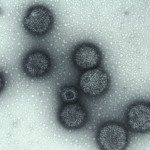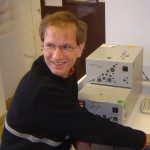Link to Pubmed [PMID] – 29337218
Link to DOI – 10.1016/j.toxicon.2018.01.007
Toxicon 2018 Jul; 149(): 37-44
The adenylate cyclase toxin (CyaA) plays an essential role in the early stages of respiratory tract colonization by Bordetella pertussis, the causative agent of whooping cough. Once secreted, CyaA invades eukaryotic cells, leading to cell death. The cell intoxication process involves a unique mechanism of translocation of the CyaA catalytic domain directly across the plasma membrane of the target cell. Herein, we review our recent results describing how calcium is involved in several steps of this intoxication process. In conditions mimicking the low calcium environment of the crowded bacterial cytosol, we show that the C-terminal, calcium-binding Repeat-in-ToXin (RTX) domain of CyaA, RD, is an extended, intrinsically disordered polypeptide chain with a significant level of local, secondary structure elements, appropriately sized for transport through the narrow channel of the secretion system. Upon secretion, the high calcium concentration in the extracellular milieu induces the refolding of RD, which likely acts as a scaffold to favor the refolding of the upstream domains of the full-length protein. Due to the presence of hydrophobic regions, CyaA is prone to aggregate into multimeric forms in vitro, in the absence of a chaotropic agent. We have recently defined the experimental conditions required for CyaA folding, comprising both calcium binding and molecular confinement. These parameters are critical for CyaA folding into a stable, monomeric and functional form. The monomeric, calcium-loaded (holo) toxin exhibits efficient liposome permeabilization and hemolytic activities in vitro, even in a fully calcium-free environment. By contrast, the toxin requires sub-millimolar calcium concentrations in solution to translocate its catalytic domain across the plasma membrane, indicating that free calcium in solution is actively involved in the CyaA toxin translocation process. Overall, this data demonstrates the remarkable adaptation of bacterial RTX toxins to the diversity of calcium concentrations it is exposed to in the successive environments encountered in the course of the intoxication process.








